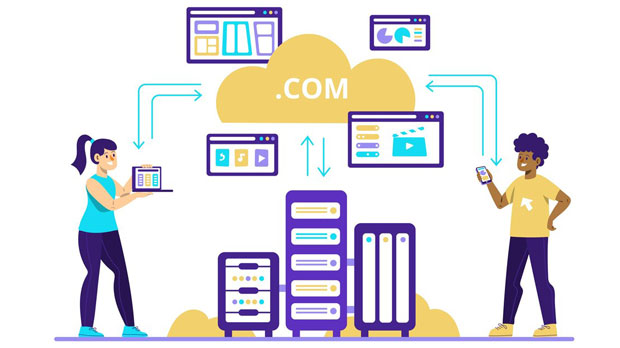In today’s digital world, online privacy and security have become a major concern. Many users are looking for effective solutions to hide their IP addresses, protect their personal data, and ensure secure internet browsing. The use of web proxy services has surged in recent years, providing users with an anonymous way to access websites and surf the internet safely. Among various available tools, the “Web Proxy Free” browser extension stands out as a reliable and user-friendly option. This guide delves into the benefits, functionalities, and practical applications of the Web Proxy Free extension, offering insights for users seeking enhanced privacy and security online. Understanding the Concept of Web ProxiesBefore diving into the details of the Web Proxy Free browser extension, it is important to understand what a web proxy is and how it functions. A web proxy acts as an intermediary between the user’s device and the internet. When a user connects to a website via a proxy, the proxy server makes the request to the website on behalf of the user, hiding the user’s original IP address. This adds an extra layer of security by masking the user’s identity and encrypting their online activities.For users concerned about their privacy or looking to bypass restrictions, web proxies are invaluable tools. They allow users to access blocked content, maintain anonymity, and protect sensitive information while browsing the web. However, not all proxies are created equal, and the quality of service can vary greatly between providers.Key Features of Web Proxy Free Browser ExtensionThe Web Proxy Free browser extension offers a range of features designed to provide secure and anonymous browsing. Below are the key functionalities that set it apart from other similar tools:1. Free and Easy to UseOne of the major advantages of the Web Proxy Free extension is that it is completely free to use. This eliminates any barriers for users who want to protect their online privacy but are hesitant to pay for premium services. The installation process is simple, and the extension can be added to browsers like Chrome, Firefox, and others in just a few clicks. The ease of use makes it accessible to all users, regardless of their technical expertise.2. Hide Your IP AddressBy using the Web Proxy Free extension, users can easily hide their IP address. This is particularly useful for individuals who want to remain anonymous while browsing the web, whether to prevent tracking by websites, advertisers, or even their internet service provider (ISP). This feature is crucial for people who value their privacy and want to prevent their online activities from being linked to their physical location.3. Secure Internet ConnectionThe Web Proxy Free extension helps secure the user’s internet connection by encrypting their traffic. This ensures that sensitive information such as passwords, login credentials, and payment details remain safe from potential hackers and cybercriminals. By using this extension, users can browse the web without worrying about data breaches or unauthorized access to their personal information.4. Bypass Geographic RestrictionsMany websites and streaming services impose geographic restrictions on their content, preventing users in certain regions from accessing specific resources. With the Web Proxy Free extension, users can bypass these limitations by choosing a proxy server located in a region where the content is accessible. This feature is particularly valuable for those who want to access streaming services, news websites, or online stores that are otherwise restricted in their country.5. Improve Browsing SpeedContrary to popular belief, using a proxy can sometimes improve browsing speed. By routing traffic through a proxy server with faster connection speeds, users can potentially enjoy faster loading times for websites. Additionally, some proxies offer features such as content caching, which can reduce the load time for frequently visited websites.Practical Applications of Web Proxy Free ExtensionThe Web Proxy Free browser extension is not just a tool for anonymity; it also has several practical applications that make it a valuable asset for everyday internet users.1. Protecting Personal PrivacyThe primary function of a proxy is to protect the user’s privacy. With identity theft and cyber-attacks becoming more common, protecting personal information online is essential. The Web Proxy Free extension helps safeguard sensitive data from malicious entities by masking the user’s IP address and encrypting their internet traffic. This makes it much harder for hackers and third-party organizations to track the user’s online activities or gather personal information.2. Enhancing Security on Public Wi-Fi NetworksPublic Wi-Fi networks are often insecure, making them a target for hackers. By using a web proxy like Web Proxy Free, users can enhance their security while using public Wi-Fi. The encryption provided by the extension ensures that sensitive information remains private, even when accessing websites on an unsecured network. This is particularly useful for people who frequently use coffee shops, airports, or other public spaces to connect to the internet.3. Accessing Censored ContentIn some regions, the internet is heavily censored, and many websites or services are blocked. This is common in countries with strict internet regulations or in regions where access to certain types of content is restricted. The Web Proxy Free extension helps users bypass these restrictions, enabling them to access blocked websites and content from around the world. Whether it’s for research, entertainment, or social media, this feature ensures that users can access the information they need without limitations.4. Avoiding Targeted Ads and TrackingOnline tracking is an ever-growing concern for users who want to avoid being bombarded with targeted advertisements. Advertisers and websites track user behavior to build profiles and serve personalized ads. The Web Proxy Free extension helps mitigate this by preventing tracking scripts from identifying the user’s IP address. As a result, users can enjoy a more private browsing experience without being subjected to intrusive ads and tracking mechanisms.5. Unblocking Geo-Restricted Streaming ServicesStreaming services like video platforms, sports broadcasts, and news websites often impose geographic restrictions on their content. By using the Web Proxy Free extension, users can change their virtual location and access content that would otherwise be unavailable in their region. Whether it's watching a movie or catching up on the latest sports event, the ability to bypass geo-restrictions is a valuable feature for entertainment enthusiasts.Conclusion: Why Web Proxy Free Extension is a Must-Have ToolThe Web Proxy Free browser extension offers an effective and easy-to-use solution for enhancing online privacy, security, and access to content. With features like IP address masking, secure connections, and the ability to bypass geographic restrictions, it serves as an essential tool for anyone concerned about their online safety. Whether for protecting personal data, accessing restricted websites, or ensuring anonymity while browsing, the Web Proxy Free extension is a valuable asset for today’s internet users.In conclusion, for individuals who value their online privacy and want to browse the internet securely, the Web Proxy Free extension is a must-have tool that delivers on its promises of anonymity and protection.
May 26, 2025



































































